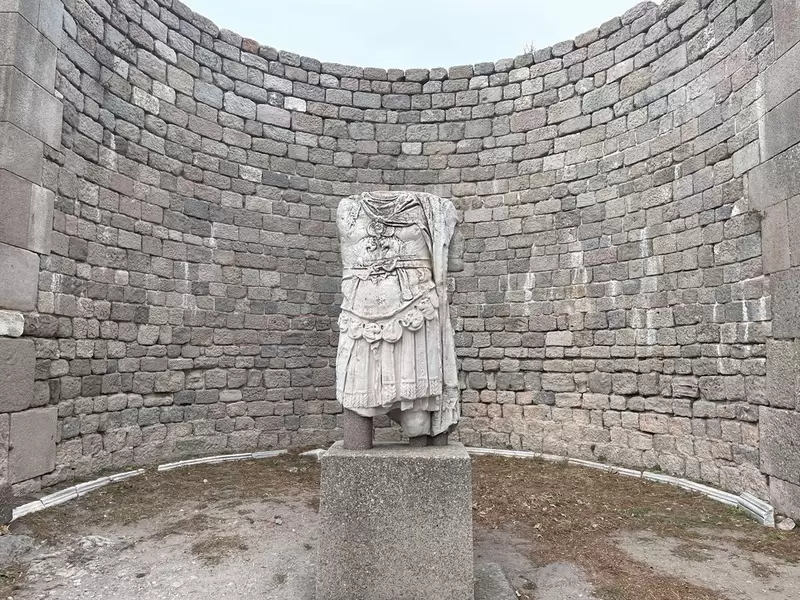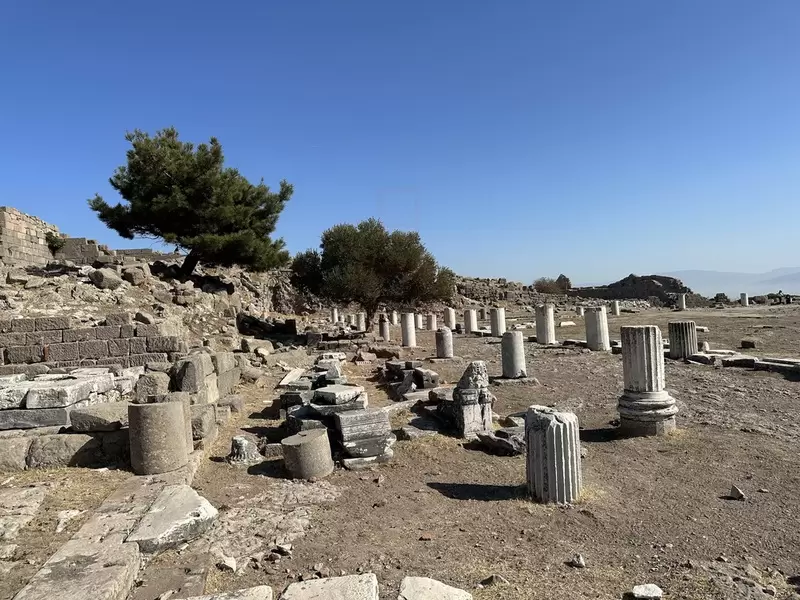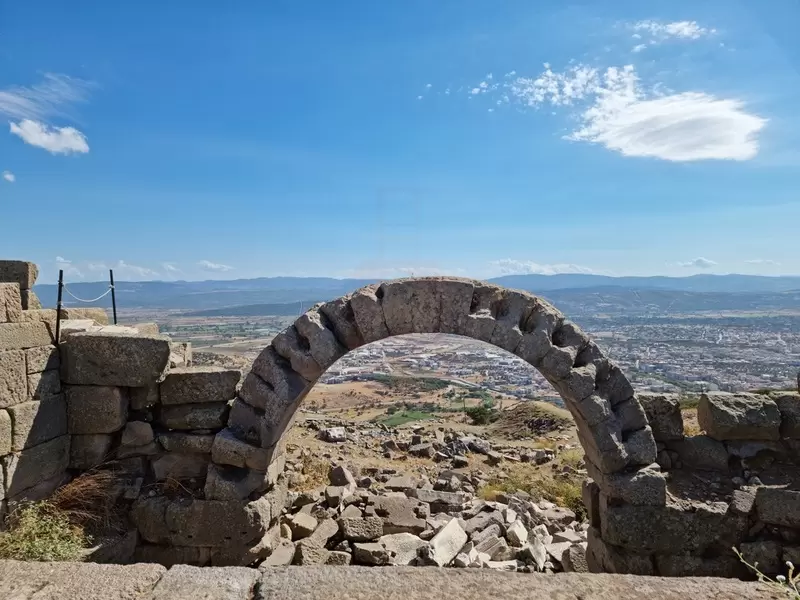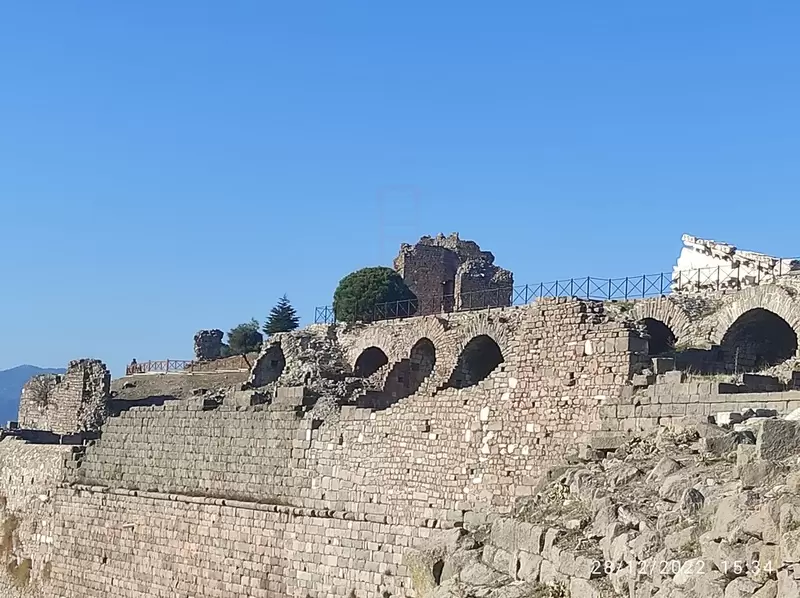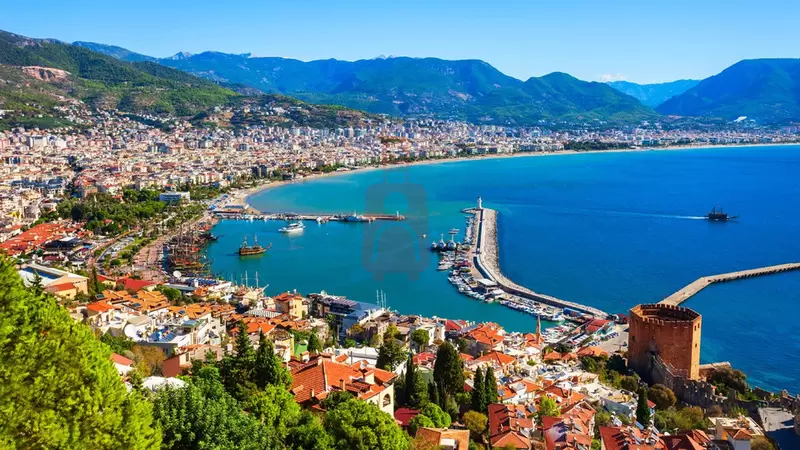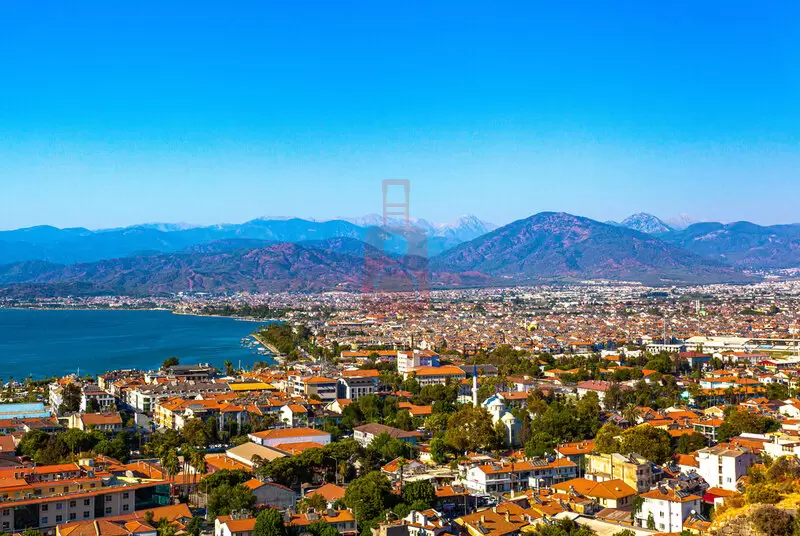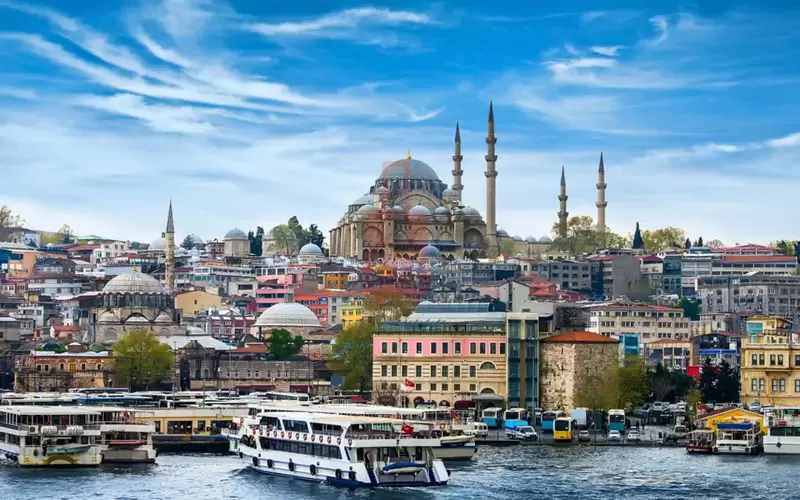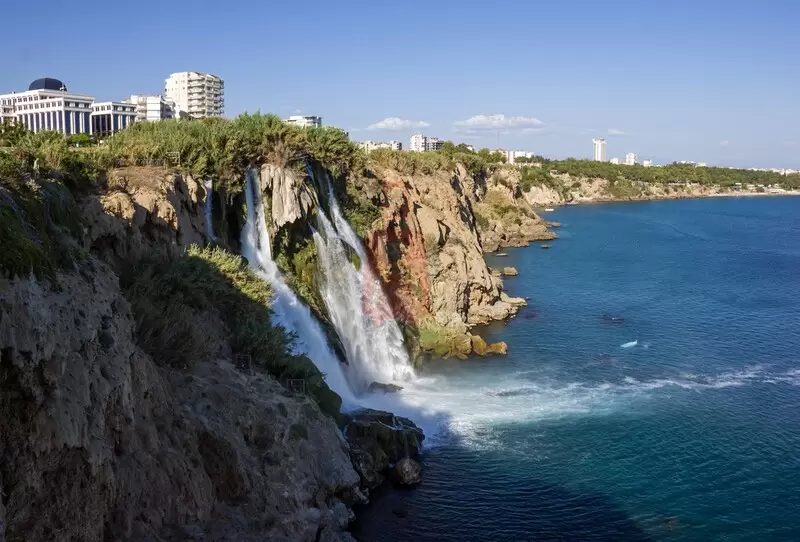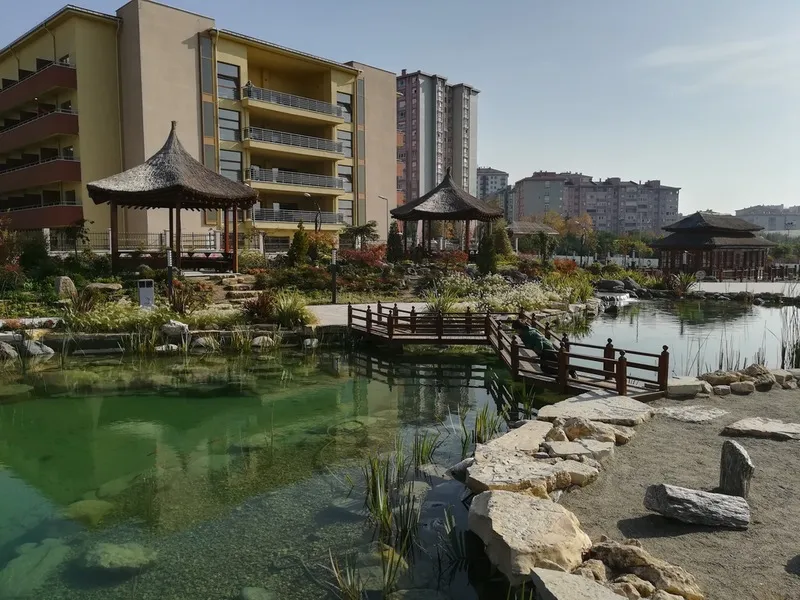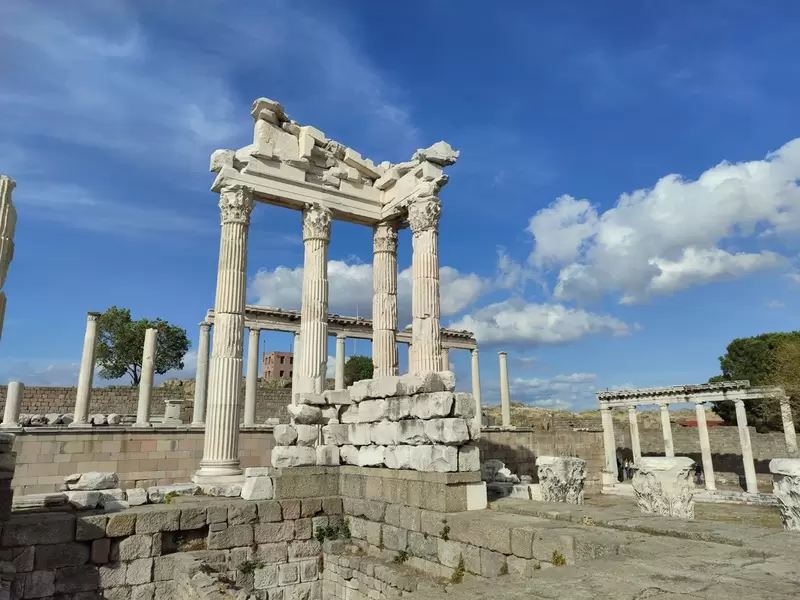
Pergamon, also known as Pergamum, was an ancient city located in present-day Turkey. It was one of the most important cultural, political, and intellectual centers in the Hellenistic world. Pergamon was situated on the Aegean coast, approximately 26 kilometers from the modern city of Bergama. It was one of the most prominent and important cities
of the Hellenistic period and played a significant role in the
political, cultural, and intellectual development of the region.
Traveling to Pergamon, you will find yourself immersed in the rich history and architectural marvels of this ancient city. The ruins of Pergamon are situated on a hilltop overlooking the modern town of Bergama, offering breathtaking views of the surrounding valleys and plains.
One of the most remarkable features of Pergamon is its ancient acropolis, perched on top of the hill. The acropolis was once home to numerous grand structures, including temples, palaces, and a magnificent theater. The most notable monument within the acropolis is the Great Altar of Pergamon, an impressive marble structure adorned with intricate reliefs depicting mythical battles between the gods and the Giants.
As you explore the ancient city, you will come across the remains of the Library of Pergamon, which was renowned for its vast collection of scrolls and rivaled the Library of Alexandria in its time. Unfortunately, the library was destroyed over the centuries, but its legacy as a center of intellectual and cultural exchange remains.
Another notable site in Pergamon is the Asklepion, an ancient healing center dedicated to the god Asclepius. This sanctuary was a place of pilgrimage for those seeking physical and spiritual healing. The Asklepion consisted of several buildings, including a temple, thermal baths, and sleeping halls, where patients would undergo therapeutic treatments and dream interpretations.
Pergamon also boasts an impressive theater, built into the steep slope of the hill. With a seating capacity of over 10,000 people, it was a venue for theatrical performances and public gatherings. The theater's well-preserved seating tiers and stage area provide a glimpse into the architectural and artistic achievements of the Hellenistic period.
In addition to its architectural wonders, Pergamon offers a glimpse into the daily life of its inhabitants through its ancient streets, agora (marketplace), and residential areas. These remnants give visitors a sense of the vibrant community that once thrived in this city.
To fully appreciate the historical significance and beauty of Pergamon, it is recommended to visit the Bergama Museum in the modern town of Bergama. The museum houses a remarkable collection of artifacts excavated from the ancient city, including statues, pottery, and jewelry, providing further insights into the art and culture of Pergamon.
Whether you are a history enthusiast, an architecture aficionado, or simply a traveler seeking a unique cultural experience, a visit to Pergamon Ancient City will transport you back in time and leave you in awe of its grandeur and historical importance.
The history of Pergamon dates back to the 3rd century BCE when it was founded by a Greek general named Philetaerus. However, it was under the rule of the Attalid dynasty, which began with Attalus I in the 2nd century BCE, that the city reached its zenith. The Attalids transformed Pergamon into a thriving metropolis and patronized the arts, sciences, and architecture.
One of the most iconic structures in Pergamon was the Great Altar of Pergamon, also known as the Pergamon Altar. This monumental altar, dedicated to Zeus and Athena, was adorned with intricate friezes depicting mythical battles between gods and giants. Today, the Pergamon Altar is housed in the Pergamon Museum in Berlin, Germany, after being excavated and transported there in the late 19th century.
Pergamon was also renowned for its ancient library, which rivaled the Library of Alexandria in its collection of scrolls and manuscripts. The library of Pergamon contained over 200,000 volumes and was a center of learning and scholarship. Unfortunately, the library was destroyed over time, and today only fragments of its former glory remain.
The city of Pergamon was built on multiple terraces, with the uppermost terrace housing the acropolis. The acropolis of Pergamon featured several impressive structures, including the Temple of Athena, the Temple of Trajan, and the famous Pergamon Theater. The theater, with its steep seating capacity of up to 10,000 people, was renowned for its excellent acoustics and stunning views of the surrounding landscape.
In addition to its architectural wonders, Pergamon was also known for its medical advancements. The city was home to the Sanctuary of Asclepius, the Greek god of healing. The sanctuary served as a medical center where patients sought healing through various methods, including the use of medicinal plants, baths, and dream therapy.
Today, visitors to Pergamon can explore the ruins of this ancient city and witness the remnants of its glorious past. The archaeological site of Pergamon offers a fascinating glimpse into the Hellenistic period and its cultural, artistic, and scientific achievements. From the towering remains of the acropolis to the remnants of the library, Pergamon provides a rich and immersive experience for history enthusiasts and travelers alike.
It's important to note that while Pergamon is an incredible historical site, some of its most notable artifacts and structures, such as the Pergamon Altar, are housed in museums outside of Turkey. Nonetheless, exploring the ruins of Pergamon offers a unique opportunity to step back in time and appreciate the legacy of this remarkable ancient city.
